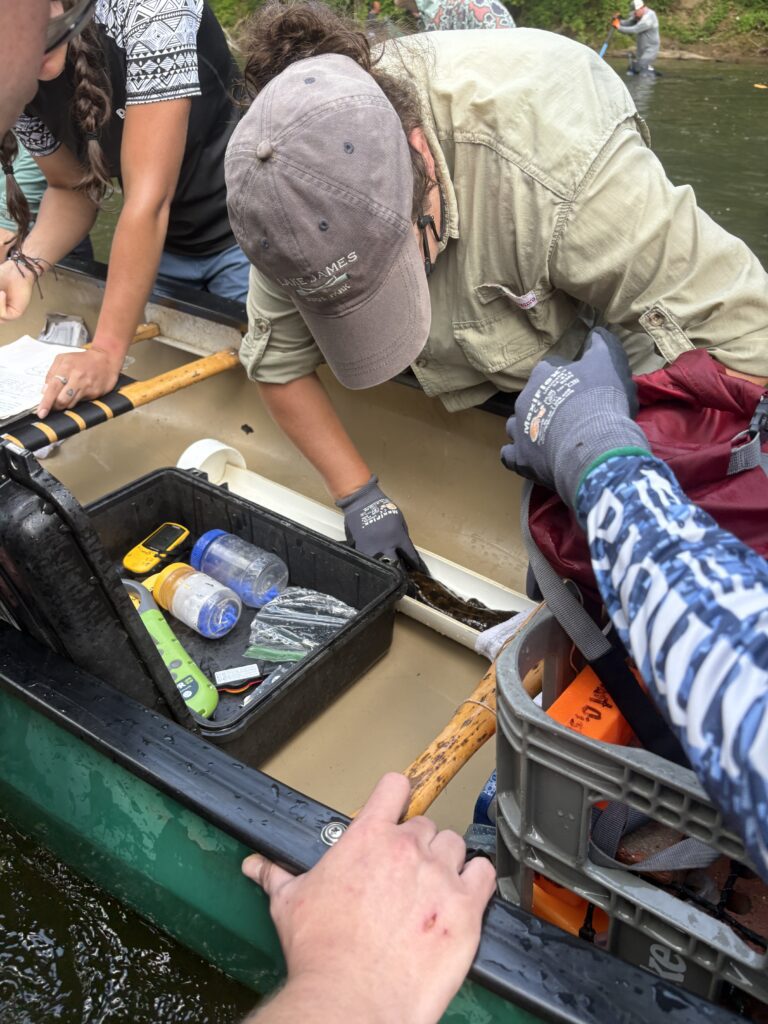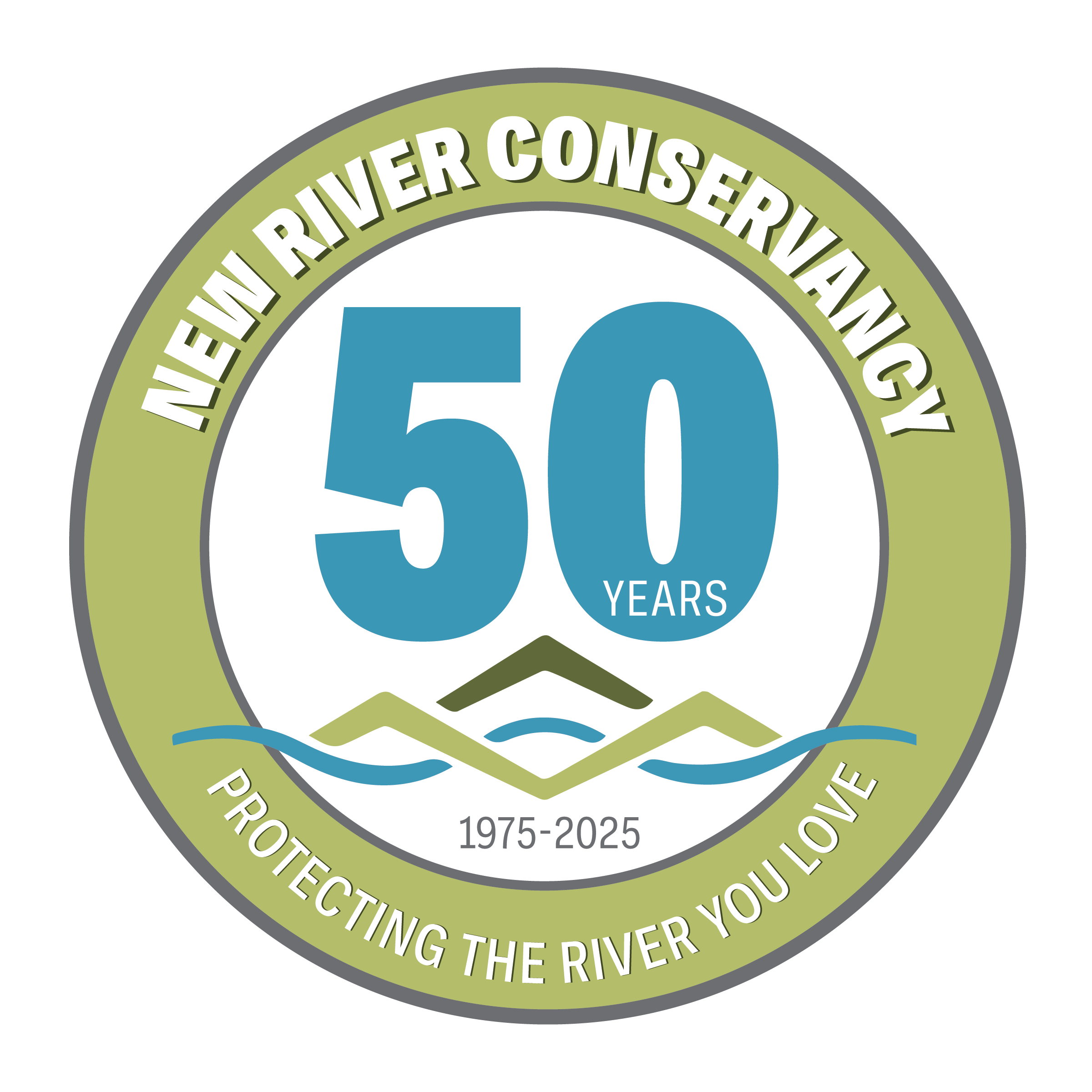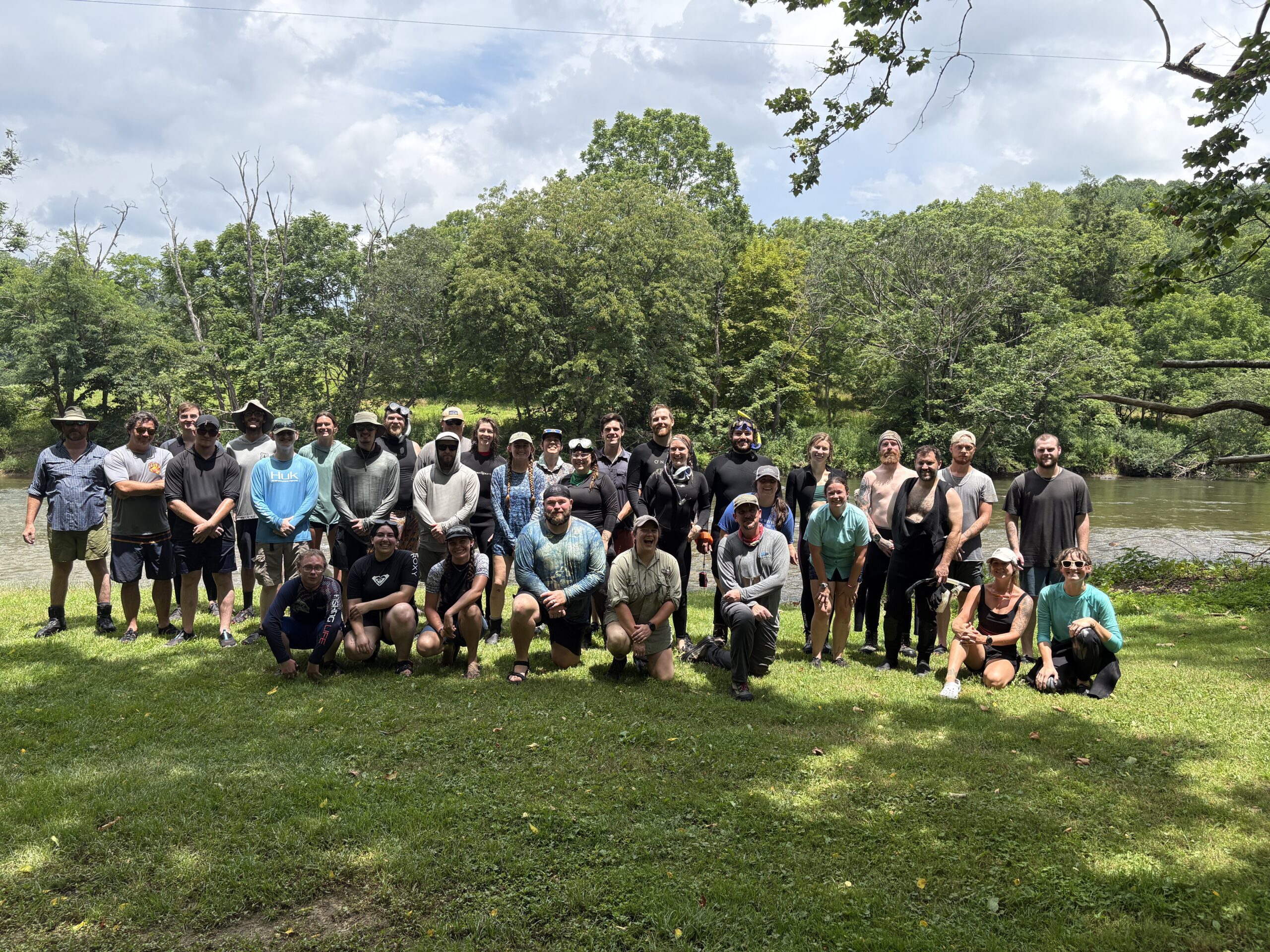New River Conservancy (NRC) is happy to help out the New River State Park (NRSP) with their expanded annual hellbender survey. Previously the surveys have been one week, this year they will be four weeks from 7/7/25 to 8/8/25. Concerned with having enough volunteers, NRSP reached out to NRC and asked if we could activate our volunteer network to help. The surveys are happening throughout the South Fork of the New River and teams include scientists, snorkelers, conservationists, interns and volunteers.
The historic flooding in the fall of 2025 shifted a large amount of bed material (rocks on the bottom of the stream) through the New River. Considering this level of disturbance, it is important to see how established populations of eastern hellbenders fared these large-scale changes. It is also important to see what the impact the debris removal crews may have had on historic populations of hellbenders. Joe Johnson, Director of Ops and Programs for NRC, says “The New River Conservancy is proud to help New River State Park with their annual hellbender survey. It is important to understand the population distribution of these ancient animals in order to ensure their long-term survival.” He continues “The population in the South Fork Appears to be healthy. We are seeing males and females, adults and sub-adults in areas we have historically found them.”
Hellbenders are an aquatic species that prefer clear, fast-flowing, well-oxygenated streams and rivers. Because of hellbenders’ preference for clean streams and rivers, their presence serves as an excellent indicator of good water quality. Hellbenders are super sensitive to silt, sedimentation and water pollution. Because of this, they are considered biological indicators of water quality. As the N.C. Wildlife Resources Commission (NCWRC) puts it, “if there is a healthy hellbender population in a stream, there is clean water.”
If you find a hellbender leave it alone but take a photo and note the location. Then, email Lori Williams, a Wildlife Diversity Biologist, from the NCWRC, at lori.williams@ncwildlife.org with the information. If you’re fishing and catch one on a hook, carefully remove the hook if it’s safe to do so without hurting the animal or cut the line as close to the hook as possible and return the hellbender to the water.
Among other things, surveyors measure the length of the hellbender.


